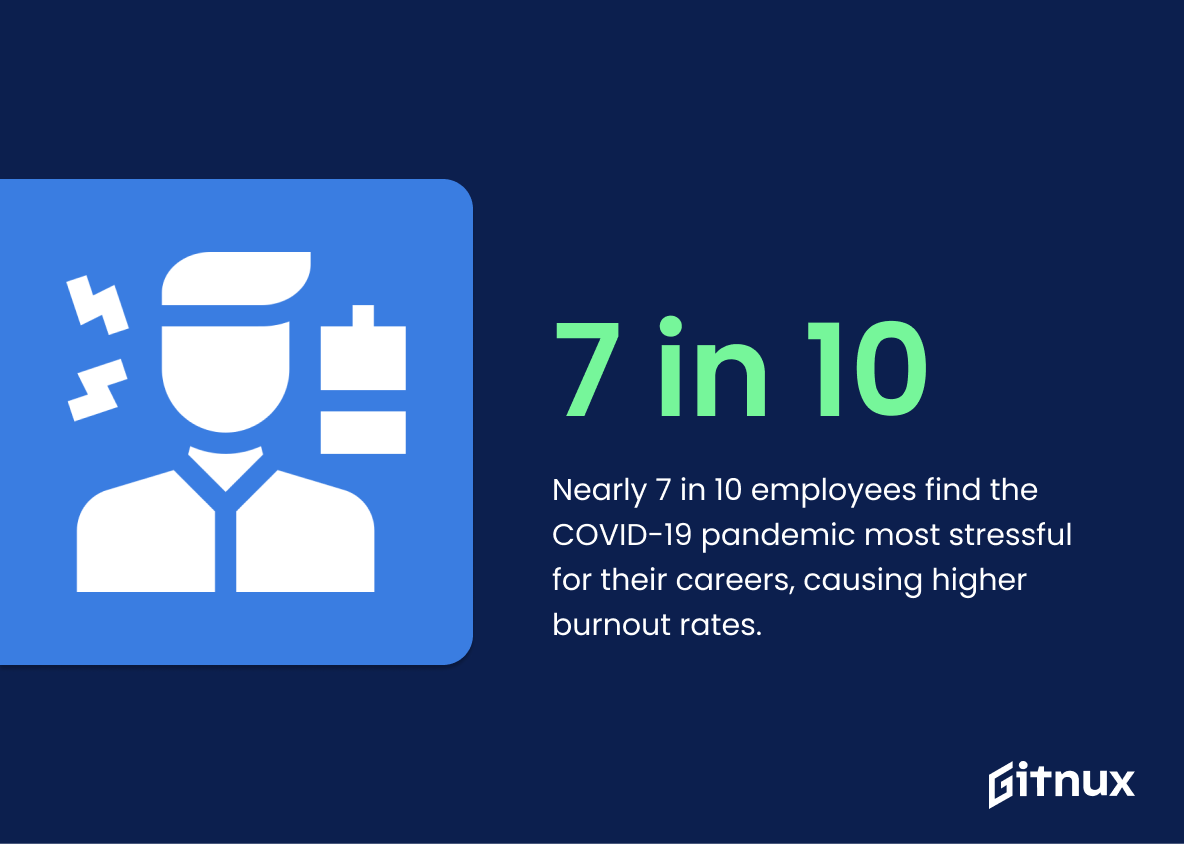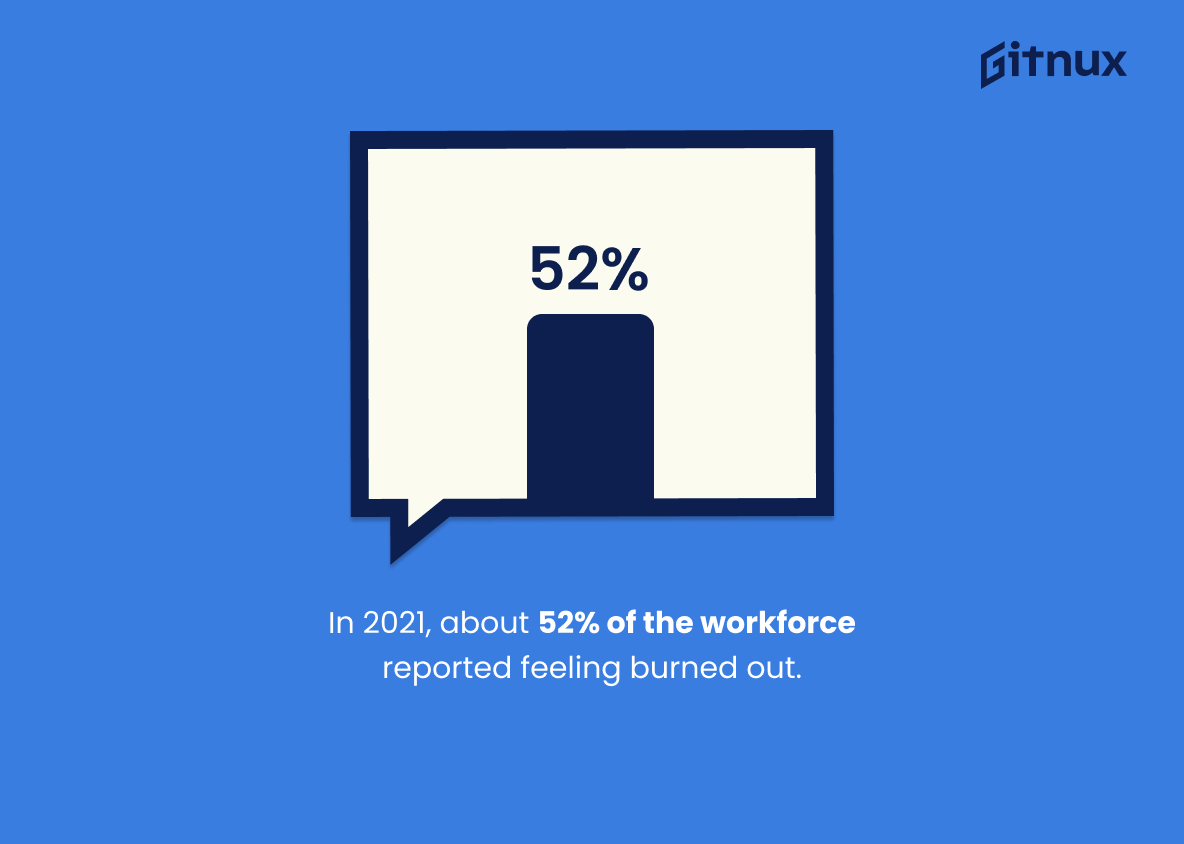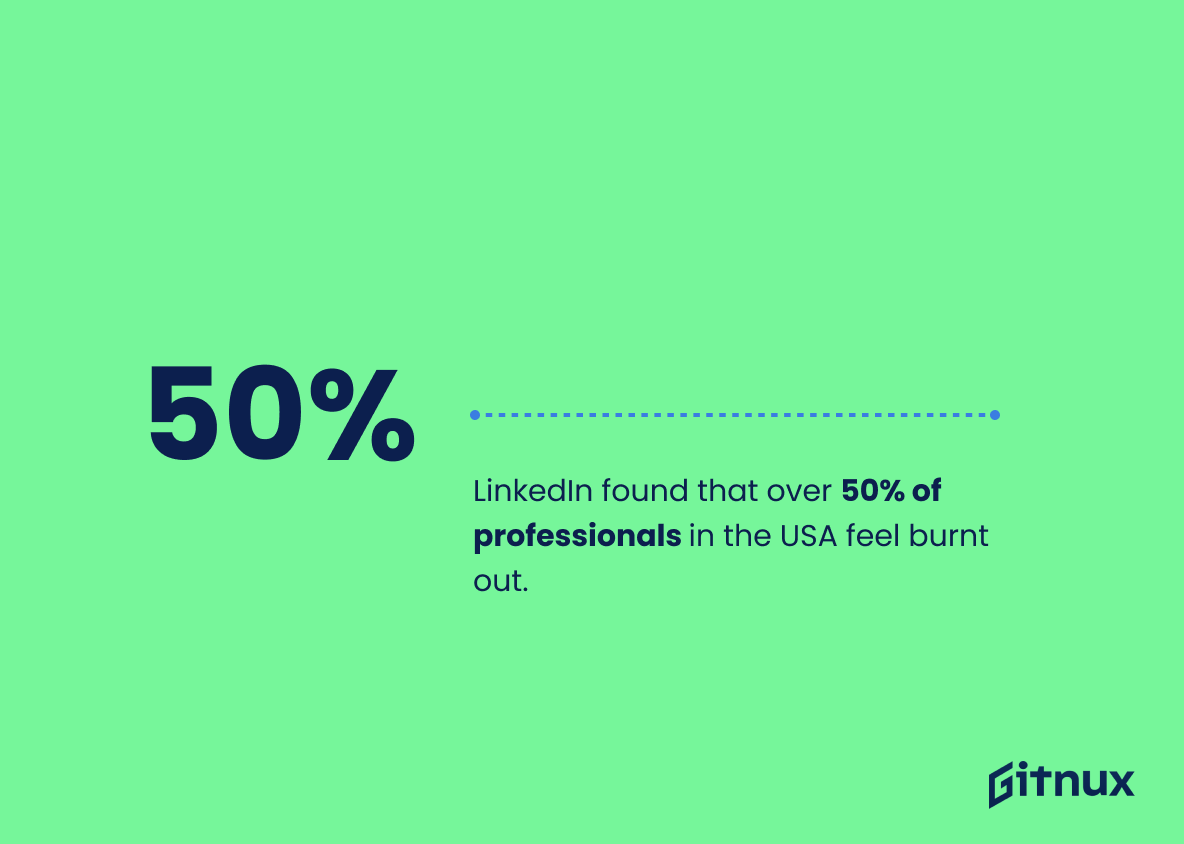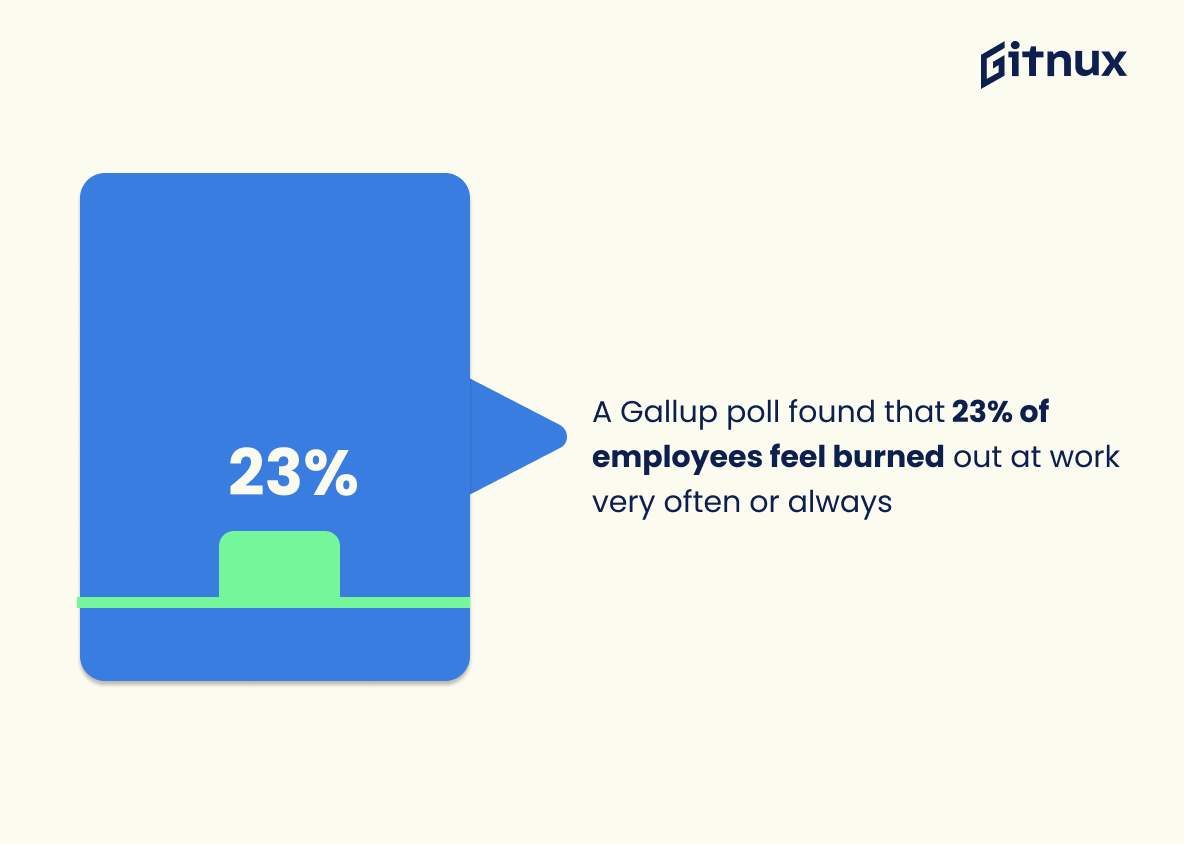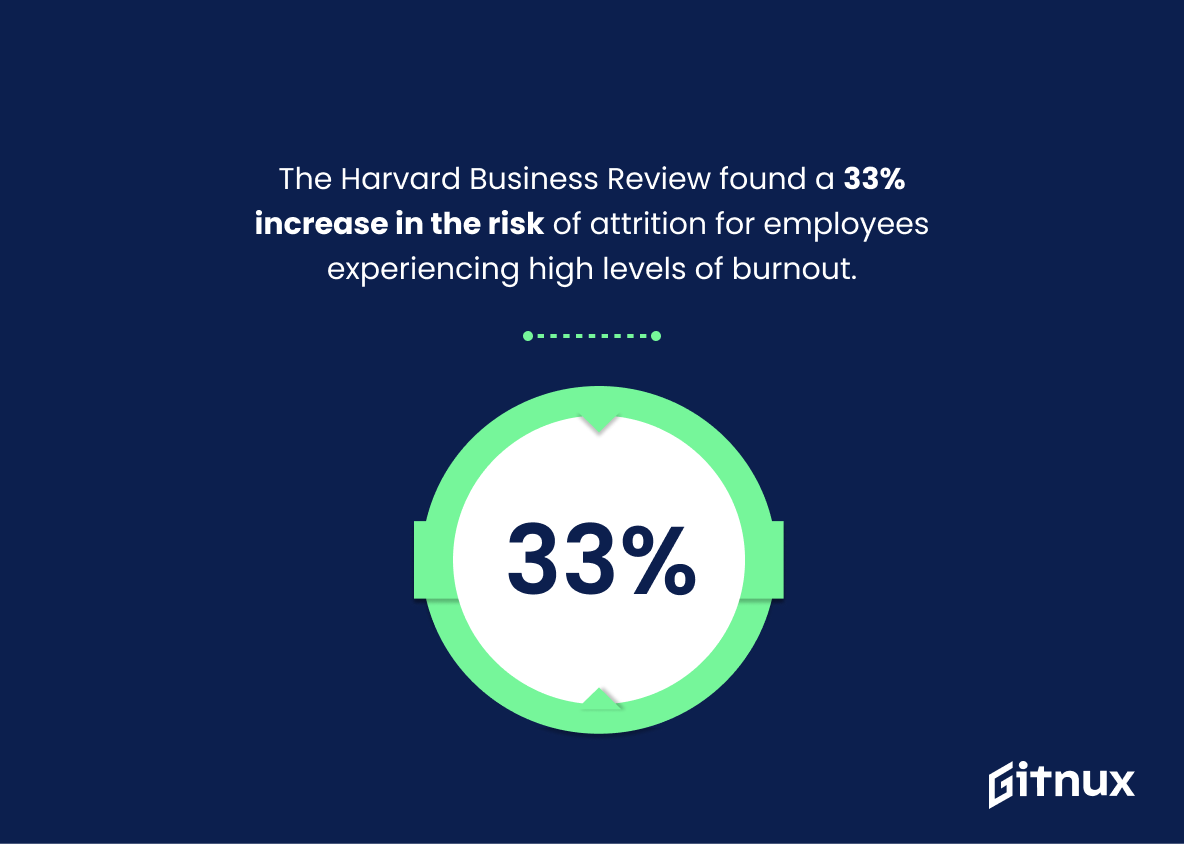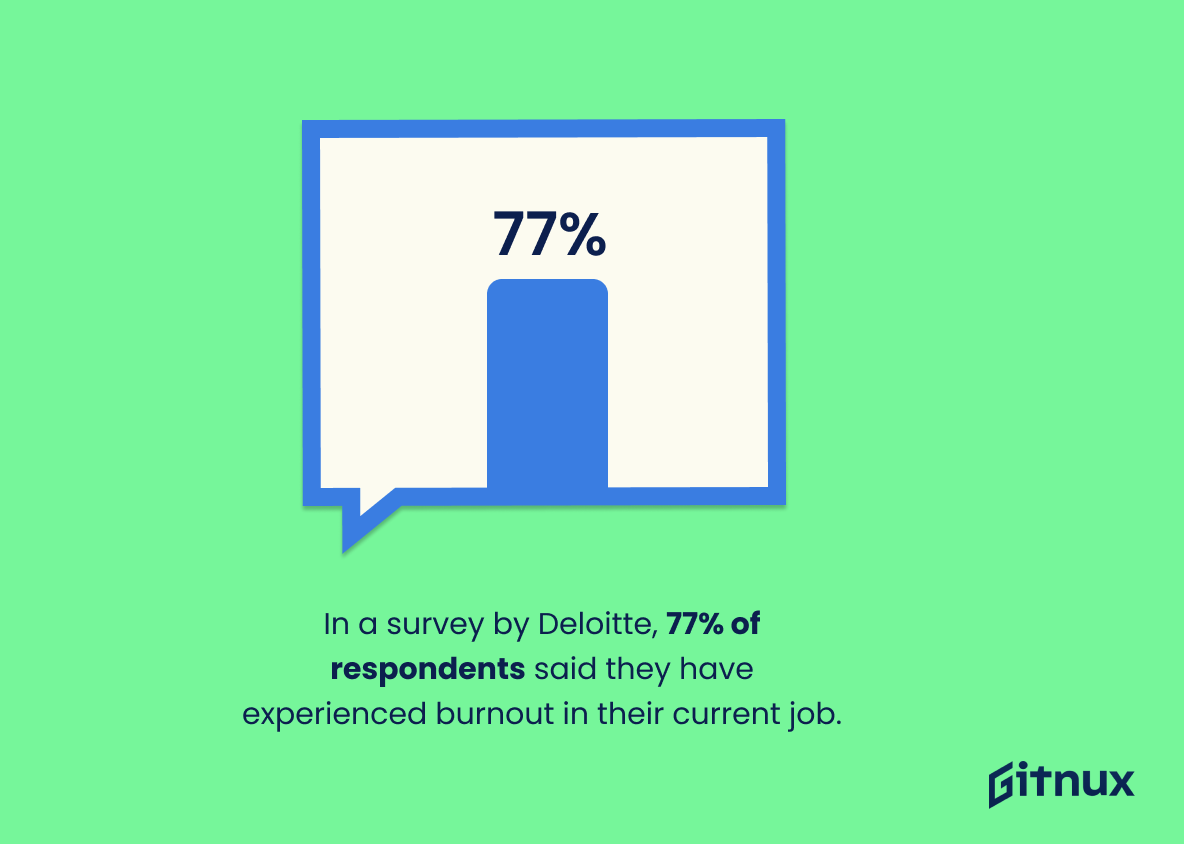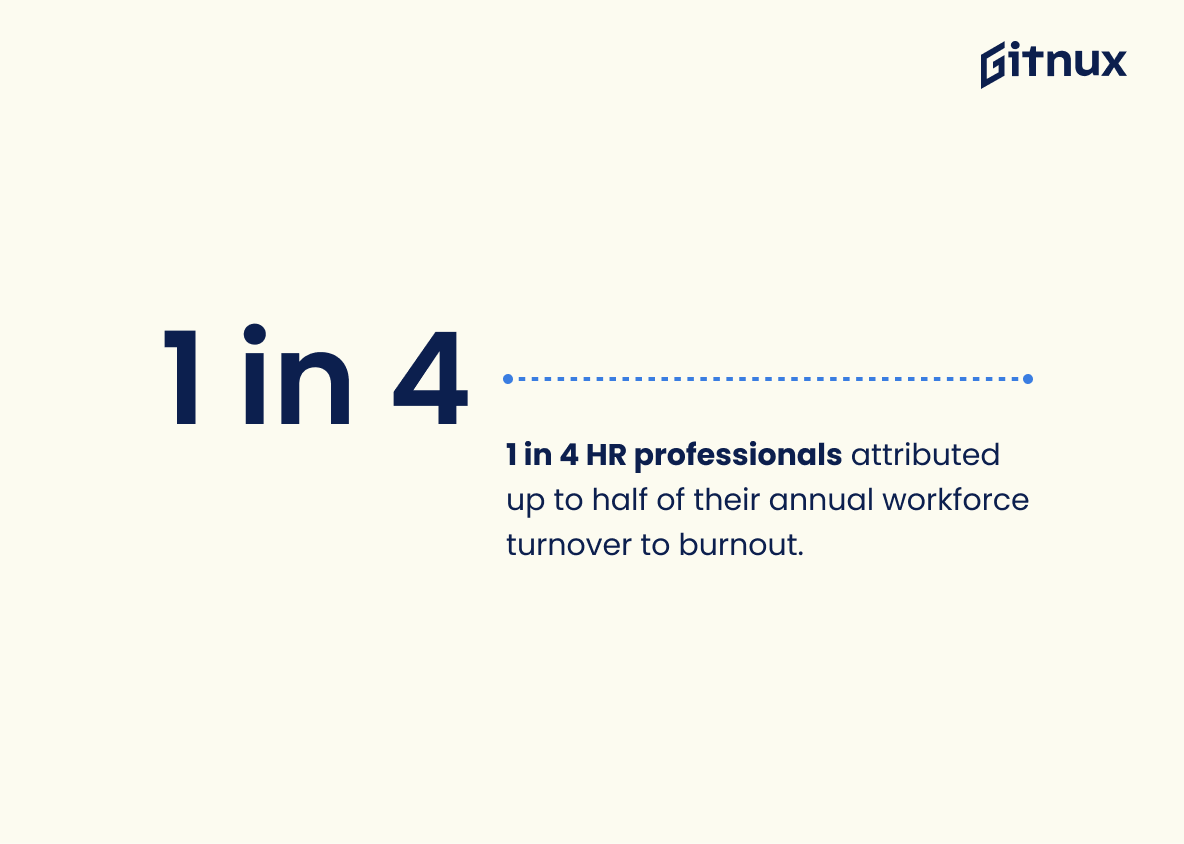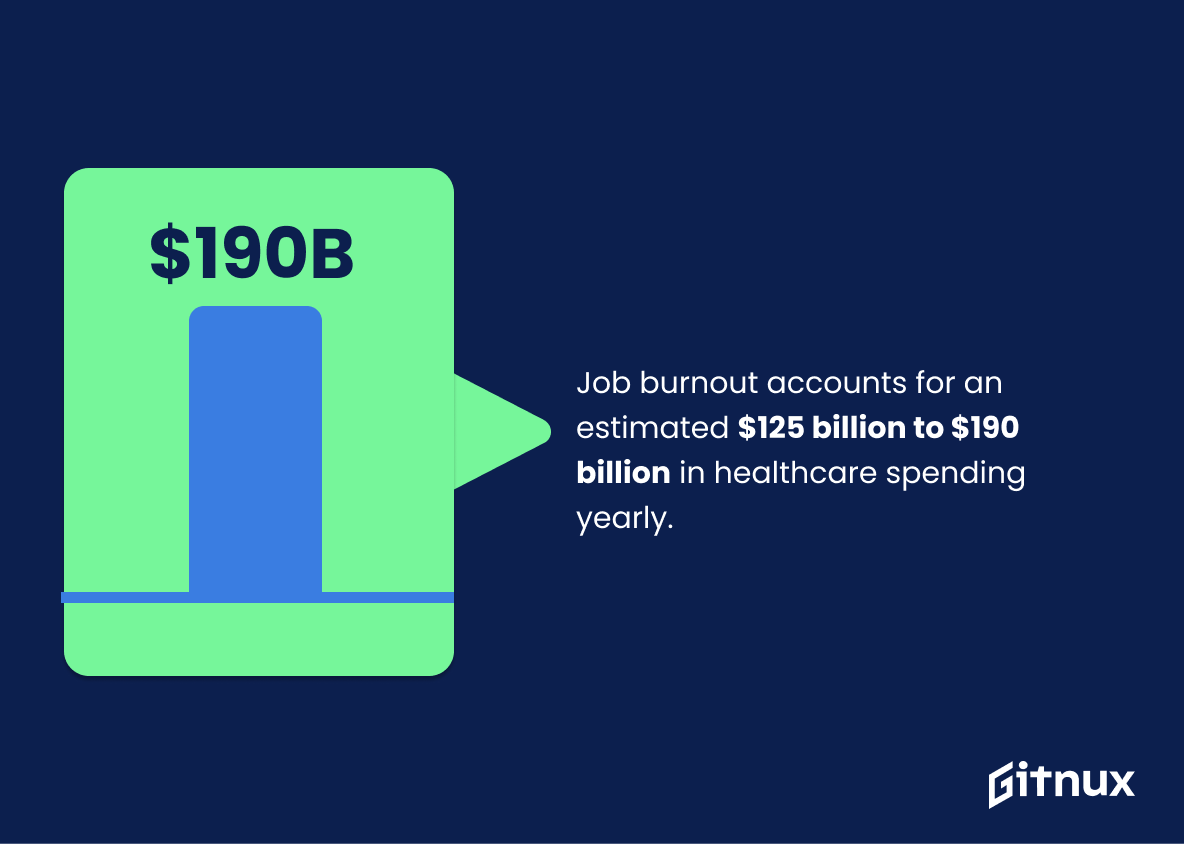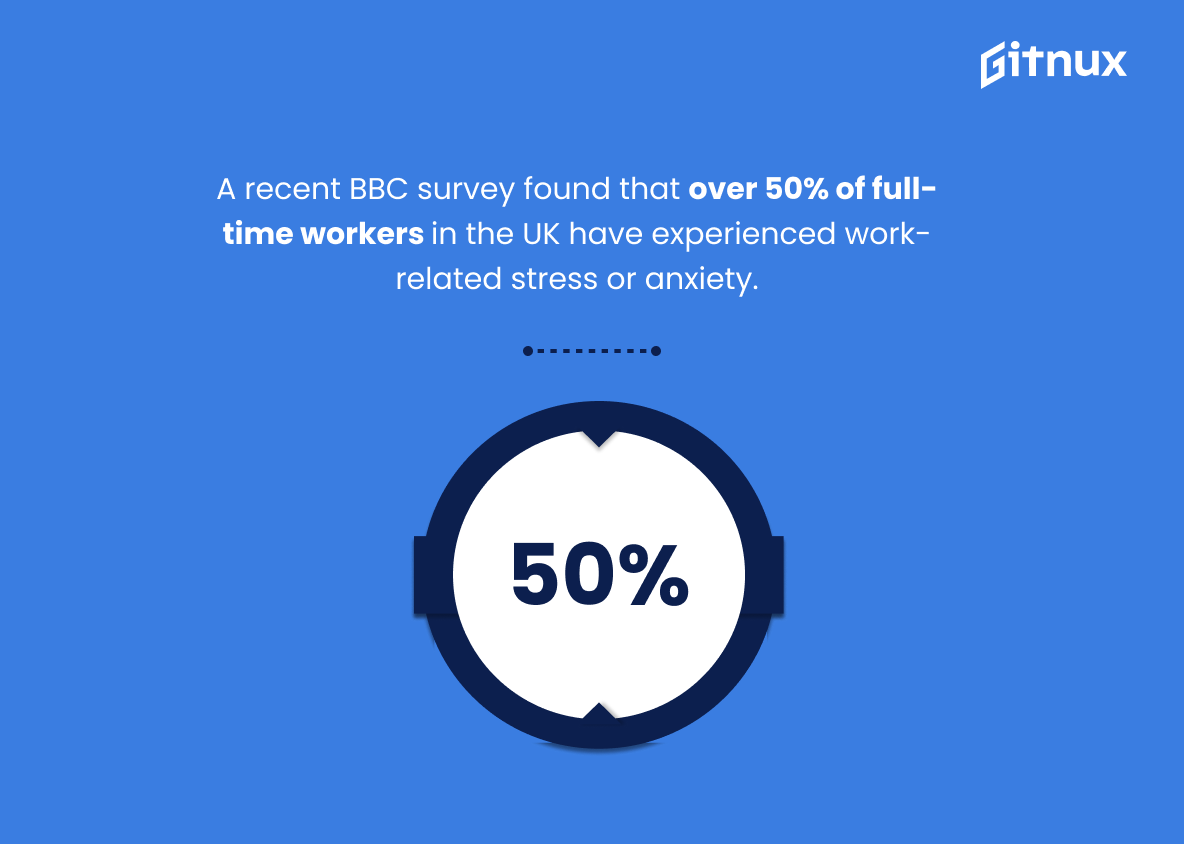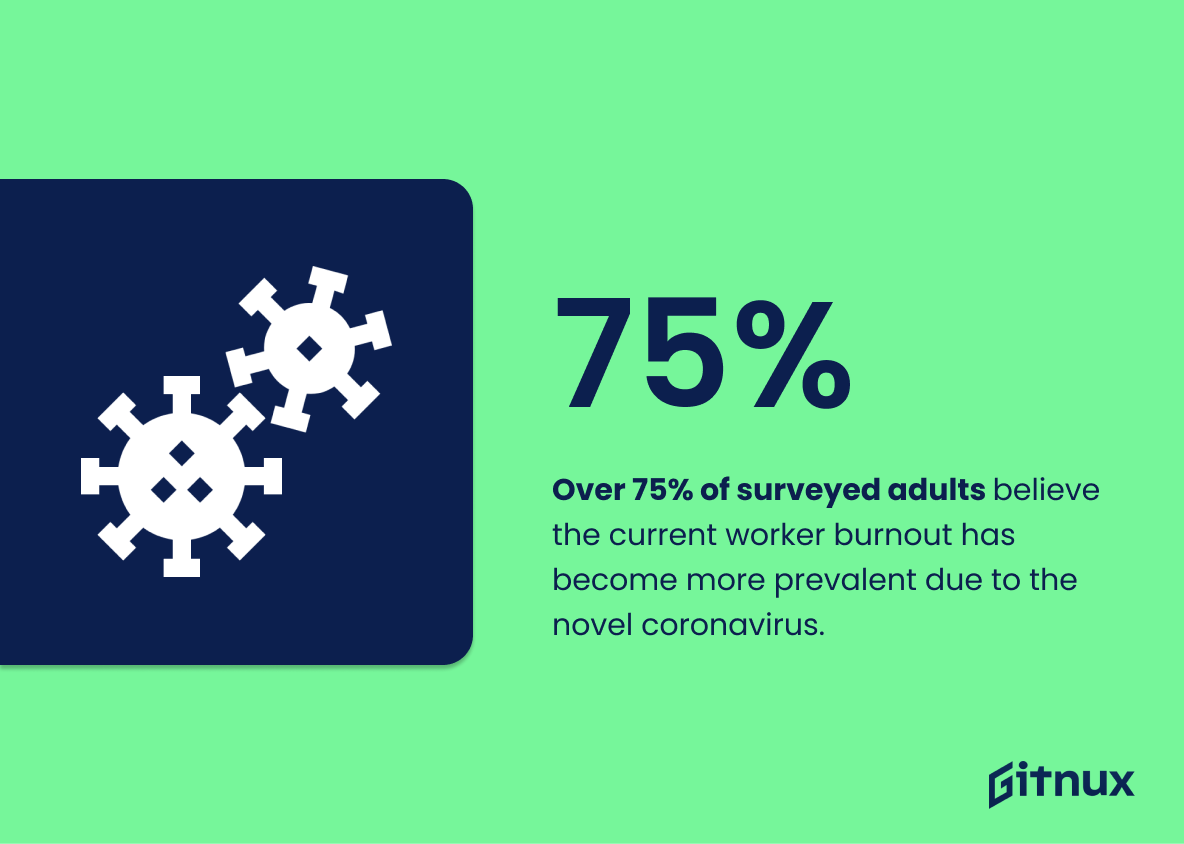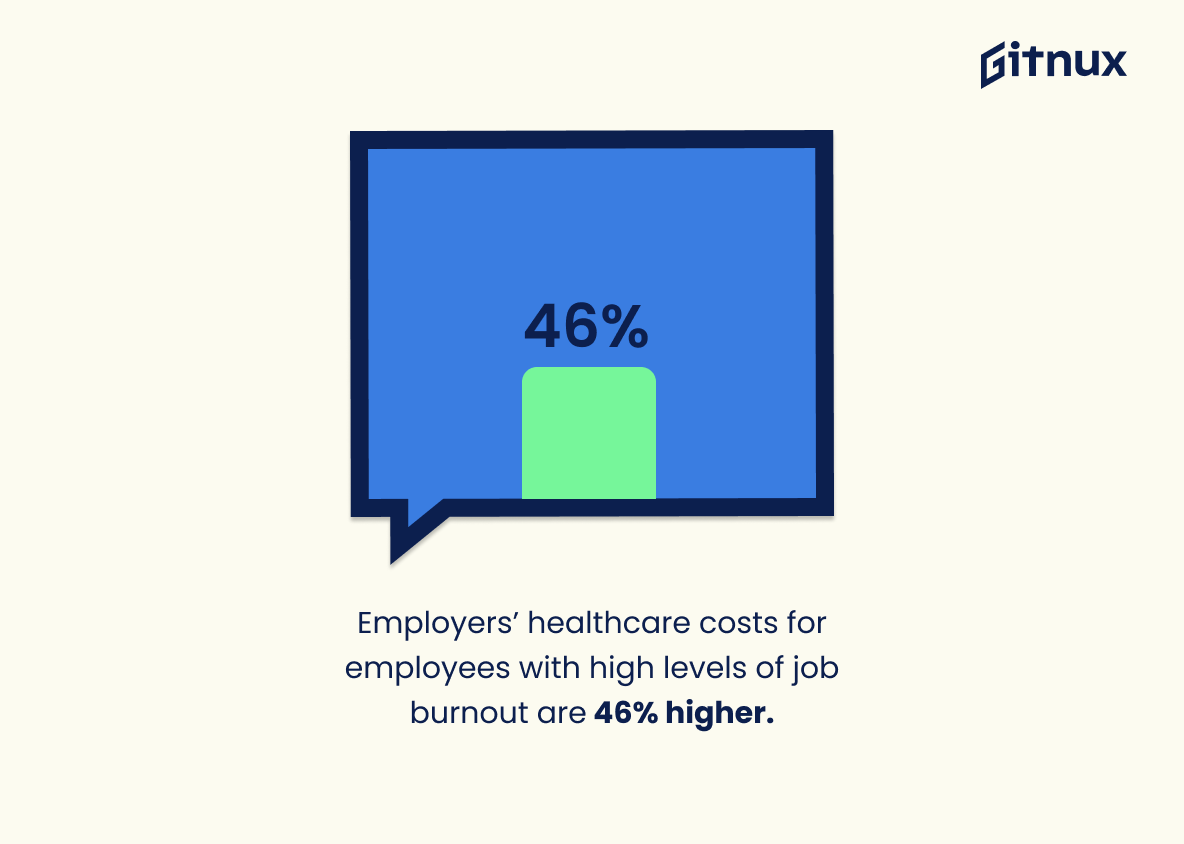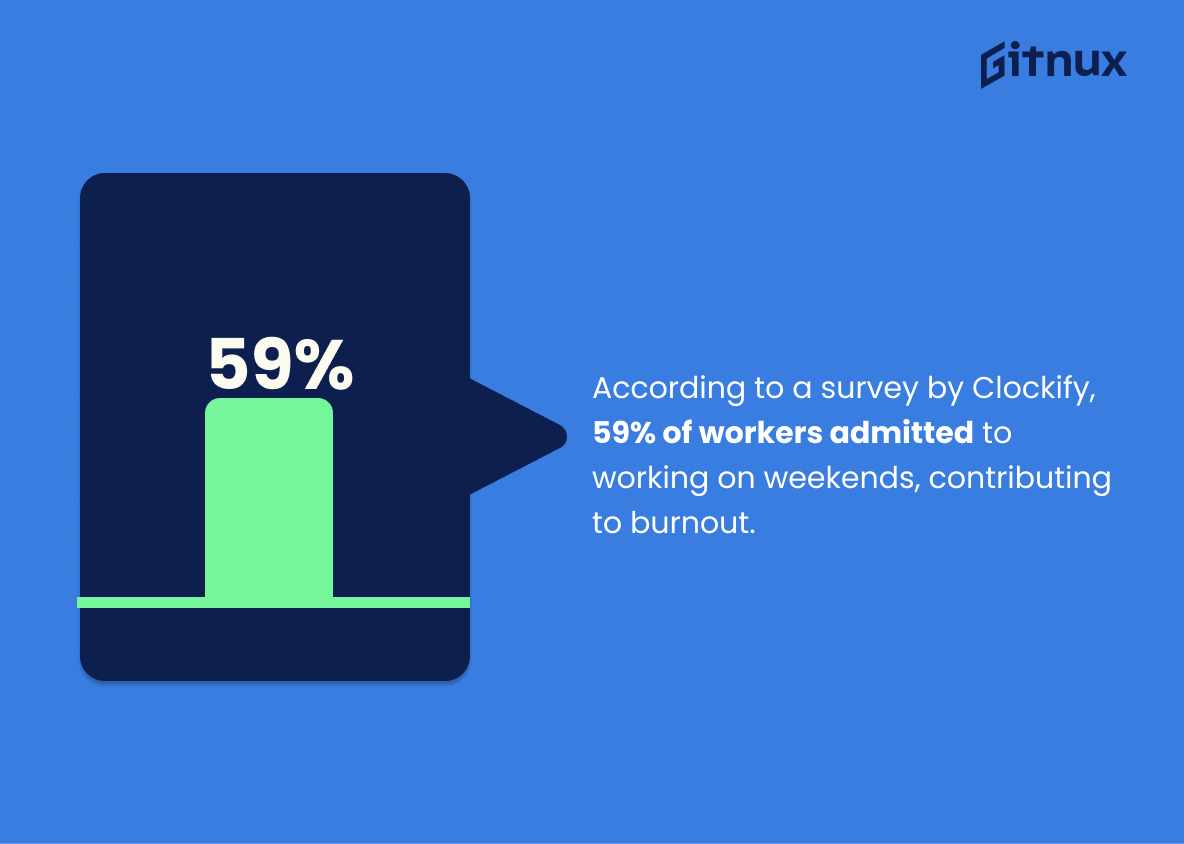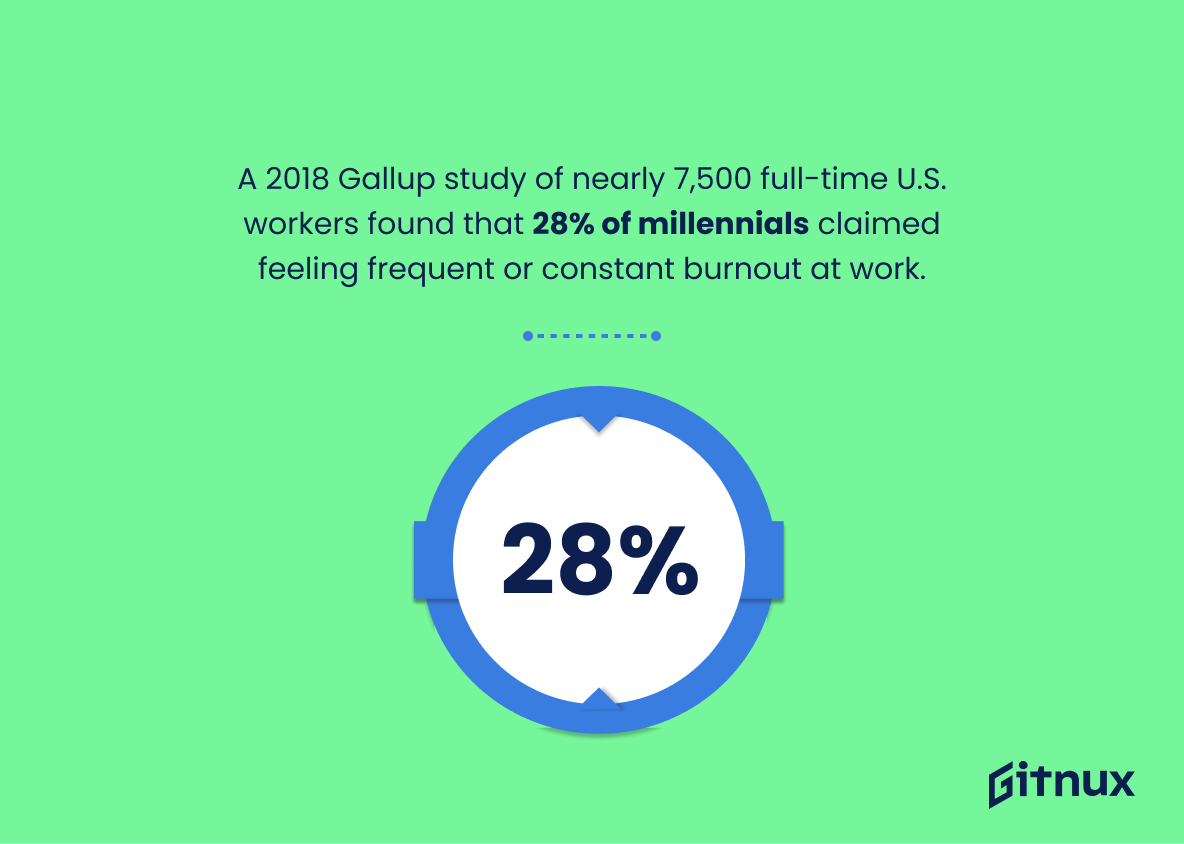In today’s accelerated global business environment, employee well-being is often compromised, a compelling concern that has led to an alarming surge in employee burnout. The phenomenon is so pervasive that it’s transforming how industries worldwide perceive and handle workplace health. However, to understand the depth of the issue, we need to dissect it analytically – through stark figures: the employee burnout statistics. This blog post aims to shed light on these indispensable metrics, revealing the sheer magnitude of the problem, its deep-rooted causes and implications, and the areas where immediate intervention is crucial. Stay tuned as we delve into the compelling world of burnout statistics, a crucial step toward fostering a healthier, happier, and more productive workforce.
The Latest Employee Burnout Statistics Unveiled
Nearly 7 out of 10 employees reported that the COVID-19 pandemic is the most stressful time of their entire professional career, leading to increased rates of burnout.
In weaving this noteworthy statistic into a blog post on Employee Burnout Statistics, it offers a stark illustration of the psychological toll the COVID-19 pandemic has inflicted on the professional realm. Undeniably, across the broad spectrum of industries, 70% of employees marking this recent pandemic as their career’s apex of stress speaks volumes about its impact. This data point serves as a grounding reality of the enormous implications of external global crises on workforce well-being and job satisfaction. It underscores the importance of robust mental health support mechanisms within workplaces, driven home by the concerning trend toward increased burnout rates. Not only does this statistic lend the issue immediacy and relevance, but it also reinforces the urgent need for strategies, policies, and initiatives aimed at proactively managing and mitigating burnout in the pandemic-stricken professional landscape.
In 2021, about 52% of the workforce reported feeling burned out.
Shining a spotlight on the lesser discussed aspect of workplace dynamics, the statistic throws into stark relief – over half of the workforce in 2021, precisely 52%, reported feelings of burnout. It becomes an essential piece in our mosaic of understanding about employee burnout. The number, more than just a cold figure, is a call to action for companies globally to evaluate and invest in the mental well-being of their employees. This intense sense of burnout might be silently hollowing productivity, creativity, and work satisfaction among employees. It allows readers to grasp the severity of the issue while prompting organizations to put preventative measures and support systems in place. More importantly, it could encourage more conversations around mental health in professional spaces, breaking stereotypes and stigmas associated with it.
LinkedIn found that over 50% of professionals in the USA feel burnt out.
The revelation that over 50% of professionals in the USA report feeling burnt out, as discovered by LinkedIn, serves as a harsh beacon of awareness in our examination of Employee Burnout Statistics. This assertion not only uncovers the overwhelming prevalence of burnout but also intensifies the alarm, calling for urgent interventions to handle this increasing workplace epidemic. We can no longer ignore it as a mere anecdote; it’s an emergency hiding in plain sight, subtly etching its impact on the work culture, employee productivity, mental health, and overall business dynamics. Its pervasive nature warrants immediate attention on strategies to mitigate burnout, improve work-life balance, and foster a healthier work environment.
A Gallup poll found that 23% of employees feel burned out at work very often or always.
Shining a spotlight on this statistic, we dive into the reality that almost a quarter of employees reported feeling burned out at work frequently or constantly as revealed by a Gallup survey. This notable chunk of the workforce demonstrates the intensity and prevalence of burnout in the occupational surroundings; a daunting revelation indeed. In our exploration of Employee Burnout Statistics, this percentage does not merely represent figures on a page but real people in work environments, grappling with stress and exhaustion. It underscores the urgency to address workplace wellbeing comprehensively, heightening the value of our discussion on this subject.
The Harvard Business Review found a 33% increase in the risk of attrition for employees experiencing high levels of burnout.
Unraveling the importance of this astonishing fact extracted from the Harvard Business Review, it serves as a stark wake-up call to all organizations. It highlights the potential perils awaiting companies that ignore escalating employee burnout levels. An ebbing of personnel not only destabilizes the workforce but also triggers significant financial repercussions related to recruitment, training, and potential productivity loss. Furthermore, as high burnout levels amplify the risk of attrition by a significant 33%, it accentuates the fact that workplace wellness should no longer reside on the sidelines of company policies but take their rightful place at the core.
The World Health Organization officially recognized employee burnout as an occupational phenomenon in 2019.
Drawn from the authoritative corridors of the World Health Organization, the 2019 recognition of employee burnout being an occupational phenomenon is absolutely pivotal in a discourse surrounding Employee Burnout Statistics. This not only elevates the seriousness of the issue toward global concern but also to an acknowledgment of its impact on workplace productivity and individual mental health. When browsing through this blog post, you’ll appreciate the gravity behind each statistic knowing that research is backed by WHO, pointing toward an urgent need for holistic workplace strategies to alleviate burnout’s invisible toll.
In a survey by Deloitte, 77% of respondents said they have experienced burnout in their current job.
Immersing ourselves in the confronting reality highlighted by the Deloitte survey – a startling 77% of individuals have succumbed to burnout in their ongoing roles – is a testament to the pervasive epidemic of workplace stress. Applied within a blog post about Employee Burnout Statistics, this percentage serves as a flashlight into the dark corners of organizational culture that many prefer to ignore. It’s not merely about numbers stepping off the page; it encapsulates the voice of the majority, narrating an unwelcome truth about our workplaces. This data point thus acts as a persuasive call to arms, urging us, as a society, to address these concerning burnout rates without delay.
1 in 4 HR professionals attributed up to half of their annual workforce turnover to burnout.
A pulse taken from our corporate world reveals a startling and significant observation: 1 in 4 HR professionals designate up to half of their annual workforce turnover to burnout. Etching its undesired mark on our workplaces, this statistic exposes the silent thief nibbling at workforce stability and productivity. Every fourth HR professional’s finger pointing at burnout as the offender for half of workforce ebb illustrates an underline issue that needs immediate attention and course correction.
Even more compelling, this statistic gives us an exclusive pass to the backstage of the workings of the workforce, where unseen circumstances like burnout might be subtly, yet inexorably, pushing the exit button. It’s a hidden nemesis that could be quietly sabotaging both the spirits of employees and the overall performance of the companies.
A blog post about Employee Burnout Statistics curates information like this to spotlight the hushed workplace epidemic of burnout. It seeks to bring into focus the close link between employee burnout and workforce turnover, highlighting why businesses and organizations should seek to effectively manage and mitigate burnout. This joint insight emphasises a call to action that can no longer be ignored. Every number in this statistic is a story – a story of lost potential, missed opportunity, and the urgency for a strategic response.
Job burnout accounts for an estimated $125 billion to $190 billion in healthcare spending yearly.
The impressive figures thrown around – a staggering $125 billion to $190 billion spent per year on healthcare due to job burnout – are not just abstract numbers. They sketch a revealing picture of the prevailing reality, the magnitude of how burnout is ravaging the modern workforce. Zooming in on the colossal economic implications, it highlights the direct financial drain job burnout imposes on healthcare systems annually. Simultaneously, it underscores an urgent need for interventions targeted at mitigating this menace. In essence, weaving this statistic into a blog post centered on Employee Burnout Statistics helps illuminate the severe costs and underscore the broader societal impact thereby stirring a call to action for employers, policymakers, and stakeholders to rethink workplace well-being initiatives.
A recent BBC survey found that over 50% of full-time workers in the UK have experienced work-related stress or anxiety.
Unraveling the dense fabric of employee burnout statistics, we stumble upon the riveting revelation from a recent BBC survey – a jarring claim that over 50% of full-time workers in the UK have tasted the bitter fruits of work-related stress or anxiety. This statement is not a mere statistic, but a pulsating pulse of growing work pressure within UK’s economic veins.
In the context of a blog post about Employee Burnout Statistics, this figure stands as a lighthouse – illuminating the perils on the treacherous seas of professional life. It calls attention to the rampant phenomenon gnawing at the well-being of half the full-time working force. It serves as a sharp prick to our social conscience, nudging organisations and policymakers into understanding the severity and pervasiveness of work-induced stress.
Moreover, this statistic points towards the vital need for measures aimed at promoting work-life balance, a more humane work culture, and the preventive strategies to fight employee burnout. Enlightening us about the precariously balanced mental health of UK’s full-time workers, it implores a shift in the narrative towards mental health friendly workplaces. Thus, this statistic doesn’t merely ‘matter’ – it throbs, it warns, it incites action, and catalyzes a more compassionate dialogue around work-culture.
Over 75% of surveyed adults believe the current worker burnout has become more prevalent due to the novel coronavirus.
In a world shifted dramatically by the emergence of the novel coronavirus, the figure – over 75% of surveyed adults attributing the surge of employee burnout to the pandemic – forms a significant backbone to a narrative on Employee Burnout Statistics. In a twist of irony, the connection to the global crisis renders it surprisingly relevant. Identifying the cause of increased employee burnout enables us to comprehend the depth of this issue. The high percentage emphasizes the intensifying impact that the COVID-19 pandemic has on everyone’s mental health, not least on the workforce. Delving deeper into this statistic will allow us to untangle the factors contributing to this bleak trend, casting a light on the actions businesses may need to undertake to safeguard their employees’ well-being.
Employers’ healthcare costs for employees with high levels of job burnout are 46% higher.
Undoubtedly, the cited figure of a staggering 46% increase in employers’ healthcare costs for employees with high burnout levels paints an alarmingly vivid picture. In the intricate dance of numbers that constitutes a blog post about Employee Burnout Statistics, this data point stands out as a considerable economic warning and a call to arms. It starkly illustrates the fiscal impact of neglecting employee well-being and hints at the cruciality of implementing strategic measures to tackle burnout. Like a lighthouse cutting through the murk, this statistic essentially steers the conversation towards the often overlooked monetary consequences of burnout, thereby amplifying the urgency of addressing this issue. In essence, this figure is not just a number, but it’s an echo of problems hidden in the corporate world’s corridors, a tangible affirmation of the intensely real issue of employee burnout.
One survey shows that almost 60% of workers said they were much more likely to prioritize their work over their personal life.
Digging into the heart of Employee Burnout Statistics, this particular survey result stands as a glaring red flag. Painted across an undeniable 60% of the working population, it highlights how a majority of employees are willing, almost compelled, to sacrifice their personal life at the altar of work, painting a telling tale of skewed work-life balance. This predilection towards prioritizing the job, over personal wellbeing, positions itself at the epicenter of employee burnout – a manifestation of chronic stress marked by emotional exhaustion, cynicism, and feelings of reduced professional ability. By underlining how workers are more inclined towards work, this statistic illuminally lays bare the correlation between excessive work and burnout, triggering conversations about the need for organizations to recalibrate their work culture and expectations to prevent burnout. Hence, it’s not just a number, but a reflection of a systemic issue that demands immediate attention.
According to a survey by Clockify, 59% of workers admitted to working on weekends, contributing to burnout.
Unraveling the threads woven into this statistic pull out a striking narrative for our exploration of Employee Burnout Statistics. The narrative reveals that a striking proportion, that is 59%, confess to work engagement during weekends according to a Clockify survey. It’s like a silent, ticking time bomb, feeding into the escalating crisis of burnout. As a relentless wave eroding away their resilience and mental health, such chronic workplace stress finds unarguable evidence in the pattern of weekend work. As such, it becomes perilously vital to address this issue, giving it prominent focus in our blog about Employee Burnout Statistics. Contained in this statistic lies a potent message about the escalating pace of work culture and its adverse consequences on employees’ wellbeing. The statistic plants a sobering reminder for organizations to redefine their work boundaries and infuse more balance, or risk fanning the flames of burnout.
A 2018 Gallup study of nearly 7,500 full-time U.S. workers found that 28% of millennials claimed feeling frequent or constant burnout at work.
Taking notice of this statistic holds great relevance for an article encompassing Employee Burnout Statistics. Imprinted in the sturdy data walls of a 2018 Gallup study involving around 7,500 full-time U.S. employees is the alarming revelation that 28% of millennials report a relentless experience of burnout at work. It’s not merely any random data. It functions as a clear and loud alarm bell echoing in the deep well of labor force statistics. Leveraging insights from such a statistic enables us to comprehend the severity of the burnout situation specifically within the millennial demographic. It offers a microscopic focus into the intricacies within this age group, facilitating the design of mitigation strategies targeted towards this population, all in an attempt to promote healthy work environments and ultimately enhance workforce productivity.
2020 IBM study suggests that 41% of the global workforce is considering leaving their current employer.
Diving headfirst into this potent statistic, a startling revelation from a 2020 IBM study indicates a whopping 41% of the global workforce is entertaining thoughts of abandoning their current employer. This percentage is far from trivial, especially when drawing connections with the escalating burnout rate within the workforce. The desire to depart one’s job not only presents a loud cry of dissatisfaction but also underscores the pressing issue of worker burnout.
In navigating through the tumultuous sea of Employee Burnout Statistics, this critical piece of data unfurls a vivid picture of the extent and influence of burnout. It serves as a forewarning to employers, urging them to acknowledge and address the pervasive issue of burnout before they watch a significant portion of their workforce walk out the door. Hence, this figure can be regarded as a powerful tool to highlight the critical need to establish healthier work routines, enhanced supports, and more meaningful employee recognition initiatives in a bid to curb the ongoing trend of escalating burnout.
A 2019 Emolument survey found that the banking industry has the highest burnout rate at 67%.
Highlighting the 2019 Emolument survey’s finding not only underscores the severity and prevalence of the burnout phenomenon, but more importantly, it unravels the gravity of its impact within a particular sector – the banking industry, where two-thirds of its workers experience burnout. This pivotal insight serves as a beacon, painting a stark picture of the current occupational health crisis in one of the most influential sectors worldwide. Allowing readers to get a closer look into and better understand the dynamics of burnout in high-stakes, high-pressure environments, it paves the way for more targeted and effective strategies to combat professional exhaustion, ultimately fostering healthier workplaces.
Employees with burnout are 63% more likely to take sick leave and 2.6 times as likely to be actively seeking different jobs.
Painting the picture with raw numbers, the stated statistic beckons a stark reality, casting a spotlight on the deep-seated issues that workplace burnout can trigger. It adds tangible heft to the narrative by quantifying the repercussions that aren’t merely restrained to the health domain, but extend to affect a company’s stability, productivity, and overall employee morale as well.
A surge of 63% in sick leaves not only results in a significant productivity drop, but it also entails additional costs. Businesses could be spending more on temporary staff, overtime, and even potential safety incidents that might occur due to poorly rested replacement staff.
On the other hand, as burnout propels employees to be 2.6 times as likely on the hunt for new jobs, a company’s talent retention risks and hiring costs skyrocket. A persistent attrition, if ignored, could also spiral into a notable dent in the company’s brand image over time.
This statistic, hence, serves as a telling barometer that gauges both the hidden and apparent costs of employee burnout – and by doing so, articulates a compelling call to action for companies: invest in employee wellbeing or be ready to pay the higher price.
Healthcare workers are now 1.5 times more likely to burn out than before the COVID-19 pandemic.
In the realm of Employee Burnout Statistics, the alarming revelation that healthcare workers now face a 1.5 times higher likelihood of burning out following the onset of the COVID-19 pandemic throws a poignant spotlight on the stormy seas navigated by these professionals. As path-breaking as it is worrying, this statistic serves as a nutshell encapsulating the crushing toll the pandemic has left on our medical front lines. Not merely a dry figure, it narrates an untold story of increased pressure, heightened emotional stress, and heavier workloads, drawing our attention towards the urgent need for supportive measures, stress management resources, and improved work conditions. Therefore, within a blog post addressing Employee Burnout Statistics, it’s an anchor point deep diving into the waves of change in the professional world, specifically in the healthcare sector, set in motion by unprecedented global events.
Conclusion
In conclusion, the alarming statistics about employee burnout highlight an urgent need for businesses to proactively address this issue. Employers must foster a healthier work environment with balanced expectations, routine employee engagement, and adequate work-life balance. It’s important for businesses to keep track of these statistics and monitor burnout levels in their own workplaces. Only by recognizing and integrating preventative measures can we improve these numbers. Our collective productivity and wellbeing depend on how effectively we can combat employee burnout. Let’s use these statistics not as a cause for alarm, but as a motivator for necessary change.
References
0. – https://www.www.forbes.com
1. – https://www.www.gallup.com
2. – https://www.www.flexjobs.com
3. – https://www.www2.deloitte.com
4. – https://www.www.who.int
5. – https://www.www.themuse.com
6. – https://www.www.gartner.com
7. – https://www.clockify.me
8. – https://www.www.shrm.org
9. – https://www.www.ibm.com
10. – https://www.www.kff.org
11. – https://www.www.emolument.com
12. – https://www.www.bbc.com
13. – https://www.www.weforum.org
14. – https://www.business.linkedin.com
15. – https://www.hbr.org
